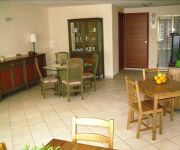Facts and Data
Webpages:
Official Unesco Page
View photos from OUR PLACE the World Heritage collection
Soprintendenza Speciale per i Beni Archeologici di Napoli e Pompei
Basis Data:
Unesco World heritage since: 1997
Size of heritage: 98 ha
- Buffer zone: 24 ha
Coordinates:
Longitude: 14,483°
Latitude: 40,750°
Summary
When Vesuvius erupted on 24 August AD 79, it engulfed the two flourishing Roman towns of Pompei and Herculaneum, as well as the many wealthy villas in the area. These have been progressively excavated and made accessible to the public since the mid-18th century. The vast expanse of the commercial town of Pompei contrasts with the smaller but better-preserved remains of the holiday resort of Herculaneum, while the superb wall paintings of the Villa Oplontis at Torre Annunziata give a vivid impression of the opulent lifestyle enjoyed by the wealthier citizens of the Early Roman Empire.
Location on Map
Show bigger map on Openstreetmap
Archaeological Areas of Pompei, Herculaneum and Torre Annunziata
The Archaeological Areas of Pompei, Herculaneum, and Torre Annunziata, located in the Province of Naples, Campania, Italy, are UNESCO World Heritage sites of immense historical and cultural significance. These ancient Roman cities were buried under layers of volcanic ash and pumice after the catastrophic eruption of Mount Vesuvius in 79 AD, preserving them remarkably well and providing invaluable insights into the daily life of the Roman Empire.
History
Pompei, Herculaneum, and Torre Annunziata were thriving cities during the Roman period. Pompei, founded in the 6th century BC, was a bustling commercial center with a population of approximately 20,000 people. Herculaneum, located closer to the sea, was a smaller but wealthier town known for its luxurious villas. Torre Annunziata, situated between the two, was an important port city.
The eruption of Mount Vesuvius in 79 AD was a catastrophic event that buried these cities under a thick layer of volcanic debris. The cities were forgotten for centuries until their rediscovery in the 18th century. Excavations began in the mid-18th century, revealing remarkably preserved buildings, streets, and artifacts that provide a unique glimpse into ancient Roman life.
Current State
The Archaeological Areas of Pompei, Herculaneum, and Torre Annunziata are now open to the public, allowing visitors to explore the remarkably preserved ruins and gain a deeper understanding of life in ancient Rome.
Pompei, the largest of the three sites, covers an area of approximately 170 acres and is home to numerous well-preserved buildings, including temples, theaters, and houses. The most famous of these is the Villa of the Mysteries, renowned for its exquisite frescoes depicting mysterious religious rituals.
Herculaneum, although smaller in size, offers a more intimate experience. The city's well-preserved buildings, including luxurious villas with intricate mosaics and frescoes, provide a vivid picture of the opulent lifestyle enjoyed by the Roman elite.
Torre Annunziata, the least known of the three sites, is primarily an archaeological park that showcases the remains of the ancient city's port area. Visitors can explore the ruins of warehouses, baths, and residential buildings, gaining insight into the city's role as a bustling trading hub.
Efforts have been made to preserve and protect these archaeological areas. Conservation work, including the reinforcement of structures and the creation of protective shelters, has been undertaken to safeguard the fragile ruins from weathering and erosion. Additionally, ongoing excavations continue to uncover new discoveries, expanding our knowledge of these ancient cities.
The Archaeological Areas of Pompei, Herculaneum, and Torre Annunziata are not only important historical sites but also serve as reminders of the destructive power of nature. They offer a unique opportunity to step back in time and witness the daily life, art, and architecture of the Roman Empire, making them a must-visit destination for history enthusiasts and cultural explorers alike.
Hotels and places to stay
Hotel Vittoria
Hotel Mec
Hotel degli Amici
Hotel Villa dei Misteri
Pompei Boutique Inn
Bed & Breakfast Villa Mena
Casa Country Villa Pompei
Villa Diomede Hotel
Villa Franca
Albergo Pompei Valley
Videos from the area
Videos provided by Youtube are under the copyright of their owners.

















